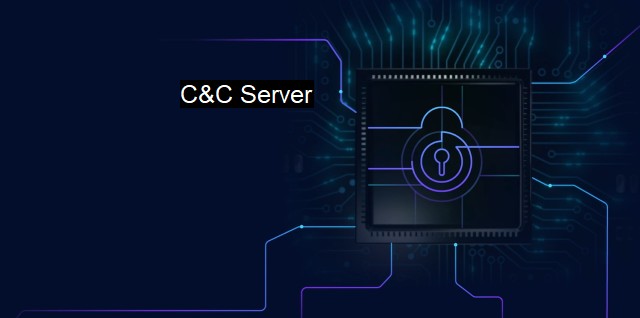What is C&C Server?
Understanding the Importance of a Command and Control (C&C) Server in Malware and Botnet Operations and its Challenges for Cybersecurity Companies
In the realm of cybersecurity and antivirus strategies, the term "C&C server" or "Command and Control server" refers to a computer that commands and controls a network of computers that are compromised or infected with a malware or that are under the influence of a malicious actor. Laptop and desktop computers, servers, smartphones, and even Internet of Things (IoT) devices such as connected refrigerators and doorbells, could all be potential recruits for C&C-infected networks.Cybercriminals use C&C servers to maintain communication with these infected machines, which are notably referred to as "bots". Together, these bots constitute what is called a botnet – networks of private computers infected with malicious software and controlled as a group without the owners' knowledge. C&C servers send commands to the bots, dictating their activities which could range from stealing sensitive data, launching Distributed Denial of Service (DDoS) attacks to distributing spam emails or even hosting illicit content.
Typically, controlling the botnet is performed either via a direct connection between the server and the bot (direct architecture), or through indirect communication that makes use of intermediary servers or services (indirect architecture). While direct architecture allows for easier and quicker command transfers, it reveals the location of the C&C server, making it more susceptible to being taken down by cybersecurity forces. Indirect architecture provides an additional layer of anonymity, but at the cost of slower and complicated interactions.
C&C servers are major cybersecurity threats owing to their scale and operation nature. The army of bots they control can be expansively spread out geographically, spanning over multiple countries or continents. This amplifies the potential damage they could inflict while creating a jurisdictional nightmare for law enforcement agencies.
C&C servers are also notoriously difficult to detect due to the critical strategical advance in the working of contemporary botnets that employ sophisticated tactics to mask the server’s origin point and to evade detection. Such tactics may include changing domains, using TOR routing, domain fluxing, double-fast-flux, and encryption, just to name a few. Cybercriminals are constantly improving their attacking strategies, making the cat-and-mouse chase between them and cybersecurity officials an unending one.
Antivirus software plays a crucial role in fighting against the threat posed by Command and Control servers. While not all antivirus software can detect or prevent C&C threats, advanced software packages are capable of effectively detecting bot infections. Once detected, it's essential to use specialized cleaning tools to completely remove the malware and disconnect the device from the botnet it's been tied to.
At an organizational level, measures can be taken to mitigate the risk of these hidden attacks. Employing a robust firewall, adopting regular and scheduled updating and patching of software, implementing network segmentation, and training employees about the risks of phishing attacks can go a long way in safeguarding against these threats.
While the ever-changing landscape of cyber attacks continues to present new challenges, understanding key threats like C&C servers can empower users to better secure their data. By staying updated with evolving cybersecurity knowledge, making use of strong antivirus tools, and implementing proactive strategies such as diligent software updating and safe browsing habits, individuals and organizations can mount an efficient defense against these cyber threats. Indeed, as our dependence on digital infrastructures deepens, recognizing and confronting these risks will only grow in importance.

C&C Server FAQs
What is a C&C server in cybersecurity?
A Command and Control (C&C) server is a computer that controls a network of compromised devices, or "botnet," typically used for malicious activities such as launching DDoS attacks, stealing sensitive information, or distributing malware.How do antivirus programs detect and block C&C server communication?
Antivirus programs use various methods to detect and block C&C server communication, including signature-based detection, behavior-based analysis, and network traffic monitoring. Some antivirus programs also use machine learning algorithms to identify patterns of suspicious behavior that may indicate C&C server activity.What steps can organizations take to protect against C&C server threats?
Organizations can take several steps to protect against C&C server threats, including implementing strong access controls and network segmentation, regularly updating software and security patches, monitoring network traffic for suspicious activity, and deploying advanced threat detection and prevention tools.What are some common examples of malware that use C&C server communication?
Common examples of malware that use C&C server communication include botnets such as Mirai, Emotet, and TrickBot, as well as ransomware variants such as WannaCry and NotPetya.| | A | | | B | | | C | | | D | | | E | | | F | | | G | | | H | | | I | | | J | | | K | | | L | | | M | |
| | N | | | O | | | P | | | Q | | | R | | | S | | | T | | | U | | | V | | | W | | | X | | | Y | | | Z | |
| | 1 | | | 2 | | | 3 | | | 4 | | | 7 | | | 8 | | |||||||